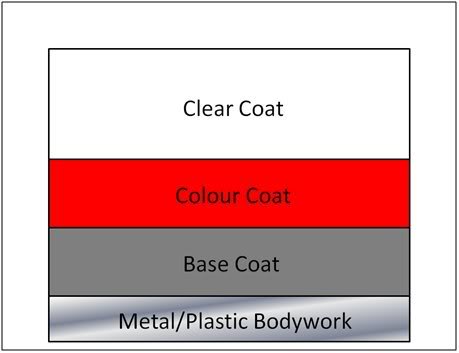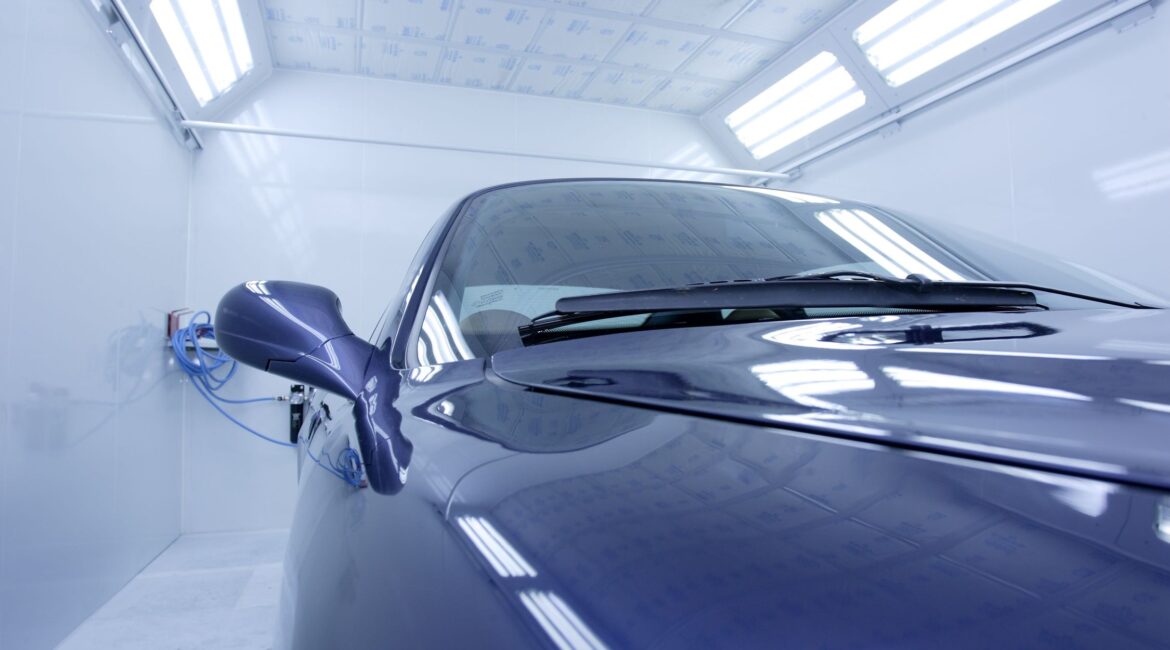Nobody expects when they drop their car off to be repaired, a technician will cut corners just to get the job done. This is not only putting your safety at risk, but can severely damage your car. With how advanced cars have gotten over the past few years, it demands a higher level of expertise when repairing a vehicle. There’s no “one size fits all” for car repair, which is why you always want to make sure your car is repaired exactly how your car’s manufacturer would instruct. We wish we could say this doesn’t happen often, but it actually happens all the time due to body shops being under tight deadlines from Insurance companies. The same applies to paint repair on your vehicle.
We’re here to tell Pennsylvania drivers how too much clear coat can cause severe damage to your car. The damage may be more than you can see and can create lasting damage to your car.
What is clear coat, and how is it different from automotive paint?
Automotive paint is a combination of solvents, fillers, resins, additives, solvents, and pigments for colored paints. Clear coat is the top layer of clear paint to achieve the glossy look on your car.
The three essential ingredients in automotive paint are:
Resin
Pigment
Solvent
The resin is the component that provides adhesion to the applied surface, holds together the pigment in suspension, and is what determines the quality and paint durability.
The pigment comes in a powder form similar to concrete. A typical aftermarket automotive paint mixing system includes around 100 colors or toners to be able to mix formulas, including metallic and pearl paint colors.
The solvent is what provides the transferability. Without it, the paint would be too thick to transfer from container to container.
Clear coat is the same as any other automotive paint, just without the pigments.
A typical paint process on a vehicle will look similar to this diagram:

Why is clear coat added to my car?
Believe it or not, clear coat serves multiple purposes for your vehicle. The first reason is it protects the pigmented (color) paint underneath from fading and oxidizing from UV rays. If you ever notice a car that has peeling paint, chances are it doesn’t have a thick enough clear coat layer. Another reason why you’ll see clear coat added to your car is it adds depth and shine to the pigmented layer underneath. Clear coat gives that real nice glossy look you see on cars. Not to mention, it aids repair technicians to achieve a smooth finish on your vehicle after performing any paint related repairs.
Can clear coat ever cause a problem?
Depending on what needs to be done to your car, your recall might call for a paint repair to achieve the final desired look. However, if a technician removes too much clear coat, it can cause severe damage to your vehicle. This damage can be discoloration, peeling, hazing, and finish failure. How much a technician removes is based on how much was applied.
Here’s an example of what peeling looks like on a car from too little clear coat:

According to I-CAR, clear coat “should be restored during the refinishing process to protect the vehicle from defects like those listed above.”
Trained auto painters and technicians will know to monitor the clear coat thickness throughout the repair and refinishing process.
Clear coat problems and ADAS
If you recently purchased a vehicle sometime over the past five years, your car is most likely equipped with some form of advanced safety technology features to keep you safer on the road. These advanced features are commonly known as ADAS and can be anything from blind-spot detection, forward collision warning, lane change assist, and a rearview camera.
These advanced technologies are made up of a bunch of sensors that are located in different areas of your car. The bumper cover can have up to 4 sensors alone.
Each manufacturer has restrictions on how thick the paint coat can be, along with other repair requirements. If the maximum paint coat thickness is exceeded, then it can cause these advanced safety features to no longer function. This is because these sensors wouldn’t be able to “see” what’s happening on the road, increasing your risk of getting in a collision. You want to take your car to be repaired somewhere that knows how to properly perform a paint repair and knows how too much clear coat can damage your car.
Who can repair the clear coat on my car the right way?
Here at 3D Collision Centers, we are Pennsylvania’s top choice when it comes to any paint and collision repair for your car. We use leading paint methodology systems and premium quality paint to give you the top-notch repair that you deserve.
We’re also here to assist you throughout the entire repair process. Your safety is our number one priority and we never take any shortcuts in the repair process. Our team of technicians are all highly trained in OEM repairs and know what it means to give you the best repair out there. In fact, our technicians are all I-CAR Gold Class certified, which is the highest level of certification an auto repair technician can receive.
We will work with you and your insurance company to make sure any question is answered and you have your car returned back to you in as little time as possible.
We have 7 different locations, conveniently located across Delaware, Chester, and Montgomery counties.
Feel free to give us a call at (877)-692-7776. For a list of the phone numbers for each of our 7 different locations and to schedule your free estimate, click here.
We look forward to hearing from you!





